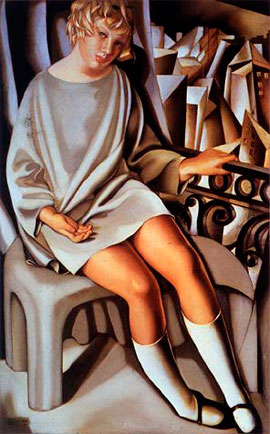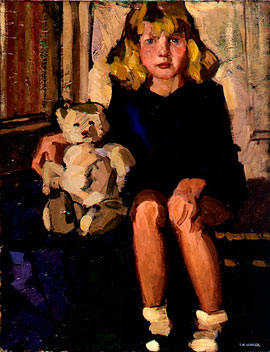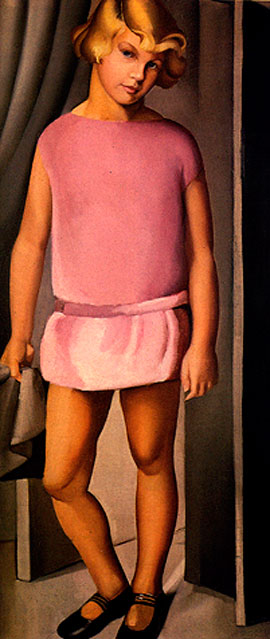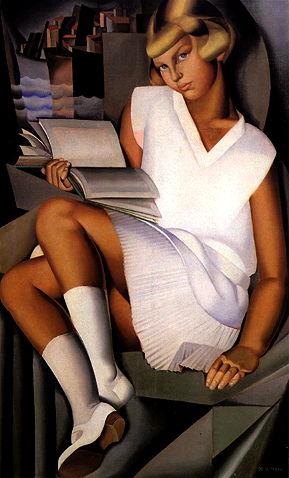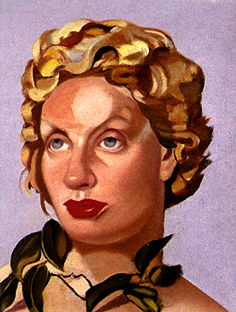Kizette de
Lempicka Foxhall
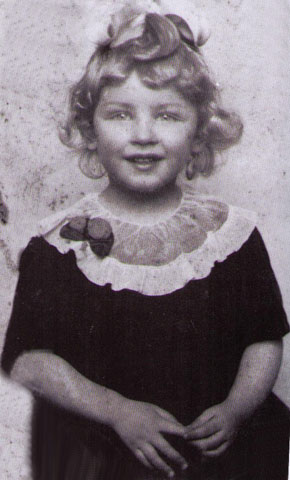
Kizette about 1925
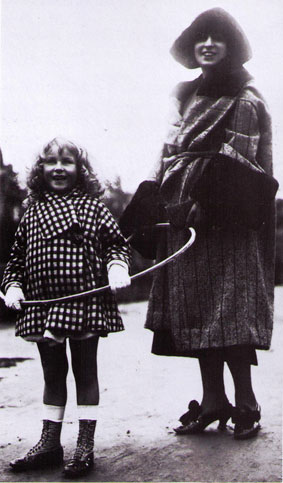
Kizette with her mother, Tamara de Lempicka (Bois de Bologne, Paris 1925)
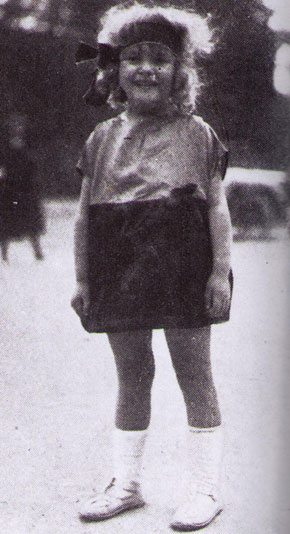
Kizette about 1925
„I have painted Kings and prostitues, ... I don’t paint people because they are famous. I paint those who inspire me and make me vibrate.“
Tamara de Lempicka
About Kizette, Tamara‘s daughter
Kizette de Lempicka was born Marie-Christine de Lempicka on September 16, 1916. Kizette and her temperamental mother‘s relationship was at times stormy, but they seemed oddly close. Tamara often had her daughter model though did not always admit to others she had a child. Many of her friends were unaware of Kizette‘s existence. Tamara titled paintings of Kizette with anonymous titles such as Girl on a Balcony or First Communion.
„Girl on a Balcony“ was important in Tamara de Lempicka‘s artistic career as it won her first major award, First Prize at the Exposition Internationale in 1927. Baroness Kizette de Lempicka-Foxhall wrote Passion by Design: The Art and Times of Tamara de Lempicka, her memoirs of her mother in 1986. Obsessed with her work and her social life, Tamara de Lempicka neglected more than her husband; she rarely saw her daughter. When Kizette was not away at boarding school (France or England), the girl was often with her grandmother Malvina. When Tamara de Lempicka informed her mother and daughter that she would not be returning from America for Christmas in 1929, Malvina was so angry that she burned de Lempicka‘s enormous collection of designer hats; Kizette watched them burn, one by one. Tamara was an artist and a mother in that order, and her daughters life, like her own, was ruled by the major dictum of what we call below the artists hunger: „Work before all.“
Always a commanding presence, Tamara dominated the lives of those close to her, and Kizette was no exception. That she cared for Kizette is not in question; that she treated her harshly is beyond question. The very intensity of the bond between the two tended to make Tamaras mothering tyrannical rather than benign. Kizette de Lempicka-Foxhall about her mother Tamara de Lempicka: „She was such a dynamic person. It doesn‘t necessarily promote closeness but it promotes a kind of life that you miss when she‘s not there,“ „When we went for walks, she‘d see 10 different things that no one else would see and you‘d think, „Gosh, what an exciting neighborhood I live in!“ She would make up games of walking by shop windows and then we‘d have to recall what was in the window. She‘d always remember more things, of course. „She was strict with others but she was also strict with herself. One was not allowed to be tired, one was not allowed to put off for tomorrow,“ she added. „We were very close,“ she said firmly. The few weeks she did spend with Kizette each year, she spent intensely with her, and Kizette came to long for those times on the Italian lakes, or in Spain or Greece, when her mother was hers alone.
At the same time, Tamara tended to show her affection in the one way she knew best – painting – and she often used Kizette as a model, pouring her motherly love into the portraits for the world to see. Sometimes, when she exhibited the paintings, she called them by other names: „Girl on the Balcony“ or „Young Girl Reading.“ Most of her friends did not know she even had a daughter, and Tamara never rushed to enlighten them. Kizette, who spent most of her childhood and teen years at the finest European boarding schools or with her Polish grandmother, says she hated sitting for her mother‘s portraits. „My grandmother used to say, „Kizette, you sit for your mother because some day she will be very famous and you will be in a museum.“ „And she was right,“ Kizette said.
To the young daughter, her mother‘s erratic, impulsive life seemed normal. Kizette says that since she was rarely at home, she saw little of her mother‘s most scandalous friends. „She had her life, and I had mine,“ she said. „I thought that was how everyone lived. Every time she sold a painting and got some money, we would take a trip, often to Italy. She loved Italy.“
Kizette recalled grieving when her mother and father, Tadeusz Lempicka, divorced – her father finally tired of his wife‘s flamboyant affairs and left her for another woman – but says Tamara maintained little contact with him. Tamara de Lempicka‘s last days – a time of paranoia and an obsessive desire to control those around her – were easily the most painful and personal of Kizette‘s recollections. Torn between her demanding mother and her dying husband (he died of lung cancer three months before Lempicka), she was a victim of her mother‘s most ferocious whims. „I‘ve gone through hell and high water – Mama wasn‘t easy to live with at the end.“ She said, „but every one goes through things like that.“
